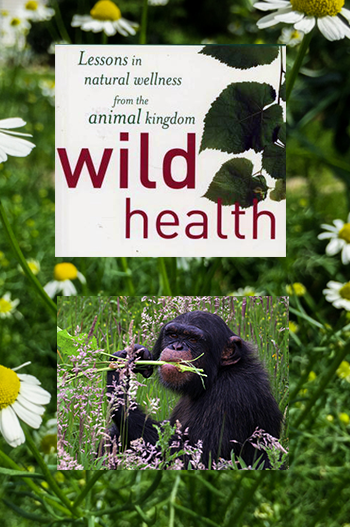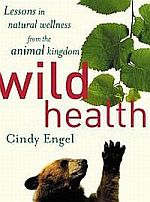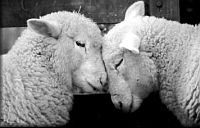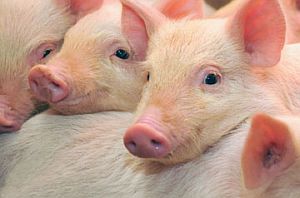Animal's Self Healing Behavior
Zoopharmacognosy is the study of how animals seem to instinctively know how to use bark,
leaves, clay minerals, roots and seeds to self-medicate and treat various illnesses.
Vertebrate animals have co-evolved with plants and other organic
components of nature's pharmacy and have enough knowledge of their own immune
responses and vulnerability to disease states and relate with their natural
environment in a variety of ways to maintain their life force and survival.
In her book "Wild Health, How Animals Keep Themselves Well and What We Can Learn From Them"
Dr. Cindy Engel DVM explains how animals wounded in the wild or stricken by disease possess a remarkable ability to treat their ailments.
There are numerous examples of animals self-medicating. For example, elephants will climb perilous mountains to access a cave of an
extinct volcano in western Kenya. With their tusks they break the soft rock from the cave walls to grind and
eat clay to obtain the minerals which protects them
against toxins and parasites. Birds, chimps and other
animals will also eat clay to absorb toxins and pathogens and will roll in clay
mud to heal their wounds or skin conditions.
 Animals have evolved with highly developed sensory systems and interpret
their territory as sights, sounds, smells, tastes and emotion. This wealth of
accumulated innate knowledge and well developed sensory systems enables animals
to identify and utilize natural healing sources in their environment that are
effective in maintaining and restoring their own physical and psychological
(emotional) health.
Animals have evolved with highly developed sensory systems and interpret
their territory as sights, sounds, smells, tastes and emotion. This wealth of
accumulated innate knowledge and well developed sensory systems enables animals
to identify and utilize natural healing sources in their environment that are
effective in maintaining and restoring their own physical and psychological
(emotional) health.
It is well documented that free roaming animals self-medicate and heal using
secondary metabolites (the plants natural healing agents) from medicinal and
aromatic plants, some toxic, along with soils, clays and charcoal and will utilize
them in a variety of ways such as inhaling, consuming, as well as using external
remedies, such as back-rolling to expose themselves to a variety of treatments.
Plant secondary metabolites often self -selected by animals are known and used
in both human, and animal pharmaceuticals for their health giving therapeutic
properties that include supporting the animals immune system, having antibacterial, antiviral,
anti-parasitic properties, and help promote the body’s own healing mechanisms.
These secondary metabolites are widely used in ethno veterinary medicine which
also supports their use and effective health benefits.
Companion and equine animals that have been rescued or abused has benefited
enormously from the facilitated approach of this concept of innate animal self-healing
behavior which not only serves as a natural tool for post-traumatic stress,
anxiety issues and related behaviors but their physical health too.
This natural method to animal health and welfare with rescued animals has
shown to be consistently effective and addressing the emotional support the
animal may be in need of and proven to help animals overcome their emotional
pain and experiences.
Zoopharmacognosy: Its’ Impact on Our Natural World, Agriculture, our Survival and the Planet
Seema Bhattessa
Terrestrial animals use their environment for nutrition such as fats, carbohydrates,
proteins (also known as primary metabolites), what is now emerging, gaining
more attention and importance, is how terrestrial vertebrates utilize their
environment as a source of medicine. In particular, plant secondary metabolites
(PSM’s) which are produced exclusively by plants to protection against pests,
as scent, coloring or attractants and as the plants’ own hormones. They have
no nutritional value and are only selected by animals in small quantities when
they are in need of them.
 This innate behavior of animal species is intentional for either their health
maintenance, health restoration in the presence of illness or disease or as
a preventative health strategy. Co-evolution of terrestrial vertebrates and
plants has enabled animals have accumulated enough innate knowledge of their
own immune responses and vulnerability to disease states and able to identify
remedial or medicinal plant sources within their natural environment. Wild and free
roaming animals that have been exposed and had access to nature’s
pharmacy, enables them to locate and utilize their environmental medicine as
a survival strategy. This innate animal behavior is known as Zoopharmacognosy
and is a survival tool still practiced today by wildlife and free roaming species
from large animals to pollinating insects, birds and reptiles.
This innate behavior of animal species is intentional for either their health
maintenance, health restoration in the presence of illness or disease or as
a preventative health strategy. Co-evolution of terrestrial vertebrates and
plants has enabled animals have accumulated enough innate knowledge of their
own immune responses and vulnerability to disease states and able to identify
remedial or medicinal plant sources within their natural environment. Wild and free
roaming animals that have been exposed and had access to nature’s
pharmacy, enables them to locate and utilize their environmental medicine as
a survival strategy. This innate animal behavior is known as Zoopharmacognosy
and is a survival tool still practiced today by wildlife and free roaming species
from large animals to pollinating insects, birds and reptiles.
Livestock, domestic animals and even our pets that do not normally have access
to nature’s remedies, can still call on this innate sense, and will utilize
plant secondary metabolites when they are in need of them, as an innate response
to restore their own health in the presence of physical and illness, disease,
and emotional trauma. Animals use their highly developed senses to locate and
identify their remedies in their environment and will utilize them in a variety
of ways such as inhaling, consuming, in their dens and nest building, as well
as using external remedies, such as back-rolling to expose themselves to a variety
of treatments.
Principles of zoopharmacognosy are based on well-developed sensory systems,
in particular the olfactory (smell) system, because essential behaviours governing
daily life, such as mate-seeking, environmental mapping, food locating and communication,
are all dependent on olfactory cues. This, combined with an evolutionarily innate
response by the body to meet its own physiological needs, means animals have
selected diets to meet their nutritional needs and have found solutions to their
medicinal needs. This pattern of selection and problem solving is based on sensitivity
to the environment, and instincts about what is beneficial for survival.
 When wild animals “self-medicate” with plants for example, they are detecting
aromas of in the smell of these sources but are also known to utilize soil minerals
and structural compounds naturally occurring in bark, grasses, minerals,
blue green algae,
and other organic sources in their environment. PSM’s have a number of protective
functions on the body, they can bolster the efficacy of their body’s immune
system which helps reduce vulnerability to infection or advanced disease states,
offer protection from free radicals and effective against pathogenic bacteria,
viruses, fungus and parasites.
When wild animals “self-medicate” with plants for example, they are detecting
aromas of in the smell of these sources but are also known to utilize soil minerals
and structural compounds naturally occurring in bark, grasses, minerals,
blue green algae,
and other organic sources in their environment. PSM’s have a number of protective
functions on the body, they can bolster the efficacy of their body’s immune
system which helps reduce vulnerability to infection or advanced disease states,
offer protection from free radicals and effective against pathogenic bacteria,
viruses, fungus and parasites.
So what are the implications and benefits of zoopharmacognosy? The potential
and benefits of zoopharmacognosy are huge, particularly in sustaining and managing
wildlife, agriculture, ecosystems, livestock and animal health and can help
reduce the industrial impact on the environment, establishing a more synergistic
relationship between humans and nature. For animal survival, plant resources
containing PSM’s and other environmental remedies may be as important as food
resources and predator distribution. Dwindling environmental sources of PSM’s
could play a key role in contributing to the disappearance of some of our wildlife
and honeybees. It may also be an important factor in the increase of diseases
transferable between animals and people (Zoonotic diseases) that we have witnessed
in recent years and that have threatened and taken its toll on our own health,
businesses and economies, such as Avian flu, BSE in cattle and more recently
Swine flu.
Understanding zoopharmacognosy behaviours can help define associations of
individual vertebrate animals with various plant species, enabling us to better
understand the unexpected and unusual migratory and breeding patterns, as well
as the survival rates of wildlife, captive zoo and re-released wild animals.
Indeed, analysis of such associations can help predict more suitable locations
for animals with essential botanical needs.
Zoopharmacognosy behavior can provide a more natural and cost-effective approach
to the health of our livestock and sustaining our wildlife in their natural
habitat. Providing nature’s wild remedies in the design of our agricultural
farms, gardens, captive animal enclosures and habitats such as zoos and wildlife
reserves, can benefit the health and well being of the individual animals themselves,
as would a variety of conservation efforts.
Associations between animal species, and environmental sources for health
maintenance, is more in design with nature and other characteristics of the
land for and offers huge potential in:
- preserving biological diversity and environmental systems
- can be a valuable contribution towards creating stable agricultural ecosystems
- can contribute as indicators for ecological networks beyond that of food webs
and environmental change assessments
- Offers another tool in restoring fragile or damaged habitats, helping the
wilderness re-establish itself
- In sustaining the long term health of our livestock, in disease prevention
by empowering the animals themselves to strengthen their immune systems and
resisting disease in the first instance, as well as reducing the severity of
symptoms should they occur
- As possible indicators for wildlife and environmental conservation and management.
Healing of Healing of animals and the environment is not a goal but a process and would
benefit from zoopharmacognosy as part of that process. The consequent effect
on associated animal species remains unknown as long as the true relationship
with PSM’s and other wild remedies remains under examined. Article written by
Seema Bhattessa
“Olfaction” or Smell therapy (also known as zoopharmacognosy)
This method utilizes the physiological and emotional innate responses of
animals to improve both their physical and emotional welfare. The effects of
olfaction therapy on people has been widely researched and investigated by the
perfumery industry, as most of us are aware that different scents and odours
can influence one’s emotional response and behaviour. Olfaction to treat post
-traumatic stress is also well demonstrated by scientists in USA by recreating
the smell of Ground Zero as a desensitization therapy for the affected survivors.
 The wild relatives of our pets have evolved with a powerful, innate healing
sense and highly developed senses, in particular sense of smell, which allows
them to utilize plants and other features of the natural world to maintain their
own health physical and psychological health. By enabling our pets to exercise
this innate skill away from the wild is a crucial step in healing their emotional
welfare, allowing them to self- select scents and natural wild remedies they
are familiar with. This approach helps them to connect with positive, healthy
feelings, give them back a measure of the confidence they may have lost, reduces
anxiety, offers them emotional support and assists with their emotional release
and helps correct any trauma related behaviour and responses.
The wild relatives of our pets have evolved with a powerful, innate healing
sense and highly developed senses, in particular sense of smell, which allows
them to utilize plants and other features of the natural world to maintain their
own health physical and psychological health. By enabling our pets to exercise
this innate skill away from the wild is a crucial step in healing their emotional
welfare, allowing them to self- select scents and natural wild remedies they
are familiar with. This approach helps them to connect with positive, healthy
feelings, give them back a measure of the confidence they may have lost, reduces
anxiety, offers them emotional support and assists with their emotional release
and helps correct any trauma related behaviour and responses.
Offering a bonding and more trusting experience between new and existing
owners and their animals is another benefit of this therapy as well as stimulating
the immune system, the most important tool an animal has in combating the onset
of illness.One example of a case study was that of a 6year old male Bull Terrier
dog with a fear phobia of noises.
He was rescued by his current owner at the age of about 18 months old. The
dog had a history of having had fireworks thrown at him one evening which left
him with a severe case of noise phobia that was so extreme that he would panic
at the slightest noises such as rain on a window and developed a fear of the
dark. This phobia almost threatened his own life when on one occasion; during
a thunderstorm he walked through a glass cabinet in an attempt to escape the
noise.
Using Olfaction self-healing therapy the dog self-selected remedies for five
days which included Sandalwood, Vetiver, Neroli and Lavender, which were indicated
for anxiety, obsessive worry, nurturing and comforting and offered a sense of
peace and calm. On day 5 the smoke alarm accidentally went off in the house
and the owner’s concern was the dog's reaction. Immediately, the owner walked
into the room where she had left him and was amazed to find him lying on his
bed, fully awake and did not even raise his head to acknowledge her presence.
The owner had never seen him react so calmly.

Health benefits in managing livestock welfare:
They
say the best way to help an animal is to help the animal help itself. Due
to human intervention, livestock animals, unlike their wild counterparts do
not have access to nature’s pharmacy and denied the opportunity to have some
control of its own health and emotional welfare. Livestock farmers who add vitamin
and mineral supplements to animal feeds, and while this is done with careful
knowledge, it still may not be the natural choice of the animal.
Herds and individual animals that appear stressed or traumatised could benefit
from a facilitated approach of this innate self-healing behaviour , in particular,
natural remedies with known calming and stress relieving properties would help
them to remain calm in everyday situations that may otherwise cause them to
be stressed. What's more, secondary metabolites from medicinal and aromatic
plants can help enhance and support the animals’ natural healing processes and
immune systems, improving existing health and providing protection against disease.
his facilitated approach would allow livestock safe access to natural remedies
they innately recognize and an opportunity to utilize on a self-selection basis.
This approach is intended to broaden the idea of livestock health, rather than
replace traditional professional veterinary care.
There is no risk of the remedies contaminating produce with harmful residues
like some conventional antibiotics, and because the animals never become resistant
to the therapy it will continue to be effective from one generation to the next.
Reasons to consider innate animal self-healing :
- Valuable contribution towards improving livestock health and welfare management
- Assists livestock to cope with environmental stressors
- Environmental enrichment: Provide a calm balanced emotional state and environment
- Helps reduce the anxiety and stress of animals being intensively farmed
- Cost effective in the long term health of livestock
- Valuable contribution in the control and management of animal diseases transferable
to the human population
- Strengthens animals immune system reducing vulnerability to infection or advanced
disease states
- Reduce the need for antibiotics
- Improves quality of produce
Innate animal self-healing behaviour can be a turnkey tool for reducing the
effects of stress, trauma and anxieties in livestock at all stages from birth
to the end of life, as well as supporting and strengthening the immune system.em.
This long forgotten innate animal knowledge offers safe, natural solution to
our current livestock health and emotional welfare problems both now and in
the future.
Seema BhatSeema Bhattessa
holds a B.S. Hons. Degree in Pharmacy from the
University of London, a Diploma in Zoopharmacognosy , as well as other animal
relevant qualifications. She currently resides in the greater London area,
where she owns and operates Innate-Scents
Animal Therapy and Zoo Pharma Consulting while independently researching
the benefits of Zoopharmacognosy on sustaining
wildlife health and conservation, as well as connecting the research to other
scientific disciplines.
How we can help manage stress and improve emotional welfare of livestock?
 Besides reBesides re-examining and improving farming practices such as diet, environmental
hygiene, non-confinement of animals and handling, there is another approach
that offers enormous potential to improve livestock stress and emotional welfare
as well as supporting and strengthening their immune system using innate animal
self-medication behavior also known as animal self-healing behavior or zoopharmacognos.
Besides reBesides re-examining and improving farming practices such as diet, environmental
hygiene, non-confinement of animals and handling, there is another approach
that offers enormous potential to improve livestock stress and emotional welfare
as well as supporting and strengthening their immune system using innate animal
self-medication behavior also known as animal self-healing behavior or zoopharmacognos.
This is an evolutionary survival strategy of how all vertebrate animals restore
and manage their own health as they would in the wild. What is more, domestic
and livestock animals still retain this innate ability which is a safe practice
and withstood the test of time. facilitated approach to this method has been well demonstrated and proven
in domestic animals and shown to be effective for improving physical illness
and emotional stress such as trauma, fear phobia, anxiety.
This holistic approach to livestock health is more in keeping with nature
and gives back to the animal some control of its own health as a curative or
preventative approach. One example of this innate animal self-medication behavior
that livestock farmers are very familiar with is allowing access to
a salt lick in the field on a self-selection basis.

Energy Healing
Natural Energy self-healing therapy that includes Reiki or Spiritual healing,
is a non-invasive ancient therapy that has stood the test of time and offers
another method of assisting animals in promoting self-healing on all levels,
bringing more balance and harmony to the animal and giving a sense of well –being,
calm and acceptance. Energy healing can address a variety of issues, it can
increase positive outcomes with a range of conditions on all levels, physical,
emotional and behavioural issues, helping them to release any anxieties, worry
or stress. Animals are very sensitive to energies and respond to energy healing
far more readily than we do.
Energy heaEnergy healing utilizes invisible energy systems that exist around and through
an animals’ body and include the auras, chakras and meridians which can affect
the emotional, physical and spiritual energy systems of the body. These energy
systems are very responsive to environmental changes and can affect animals’
emotional state (as well as physical). Universal energy is channelled through
the hands of the practitioner to balance and harmonise the animals’ energy field
and this channelled healing energy goes to wherever it is needed in the body
to assist the self-healing process of the body on all levels.
Pets of all species and rescued
animals can benefit enormously from self-healing
therapies such as these which not only serve as a natural tool for post-traumatic
stress, anxiety issues and related behaviors but their physical health too.
My work and experience of working with rescued animals has been consistently
effective and because this approach to holistic animal care addresses the emotional
support the animal may be in need of and proven to help animals overcome their
emotional pain and experiences and learning to trust and bond with people again.
Seema Bhattessa holds a B.S. Hons. Degree in Pharmacy from the University of London,
a Diploma in Zoopharmacognosy ,perates Innate-Scents Animal Therapy and ZooPharma Consulting
while independently researching the benefits of Zoopharmacognosy on sustaining
wildlife health and conservation, as well as connecting the research to other
scientific disciplines.